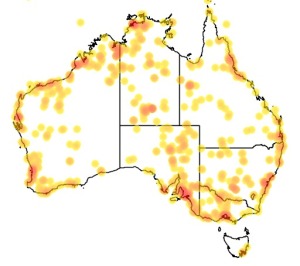Colours
Distinguishing features
It resembles a longer-legged and more delicate Green Sandpiper with a short fine bill, brown back and longer yellowish legs. It differs has a small and white rump patch, while the Solitary Sandpiper has no white rump patch at all. (Wikipedia)
Size
- From 19 cm to 21 cm (Length of specimen)
Wingspan
- From 56 cm to 57 cm
Synonyms
Distribution
Distribution and habitat preferences
It breeds in subarctic wetlands from the Scottish Highlands across Europe and Asia. They migrate to Africa and southern Asia, particularly India. Vagrant birds have been seen as far into the Pacific as the Hawaiian Islands. In Micronesia it is a regular visitor to the Marianas Islands (where flocks of up to 32 birds are reported) and Palau; it is recorded on Kwajalein in the Marshall Islands about once per decade. This species is encountered in the western Pacific region between mid-October and mid-May
This bird is usually found on freshwater during migration and wintering. (Wikipedia)
Diet
They forage by probing in shallow water or on wet mud, and mainly eat insects and similar small prey. (Wikipedia)



